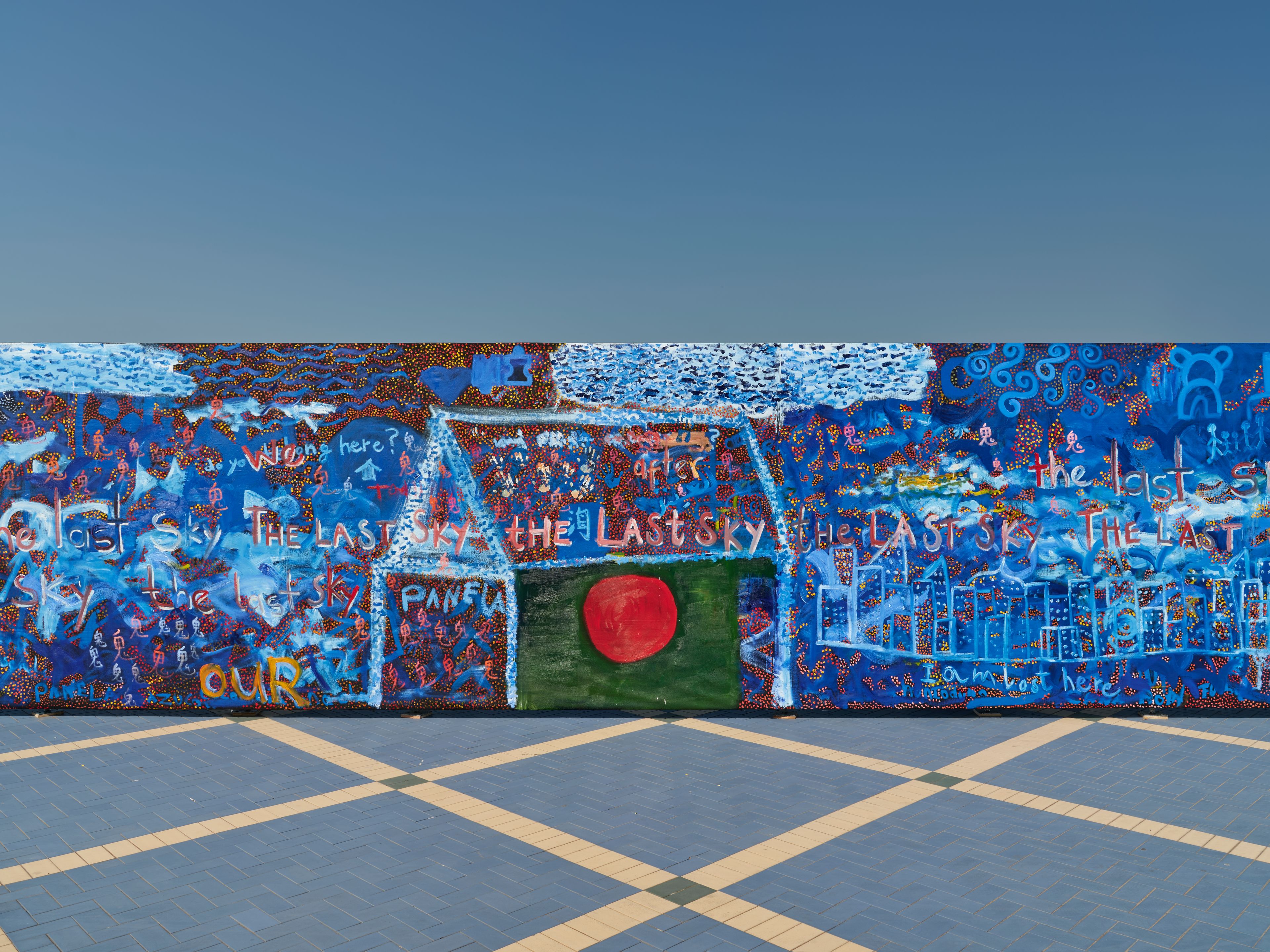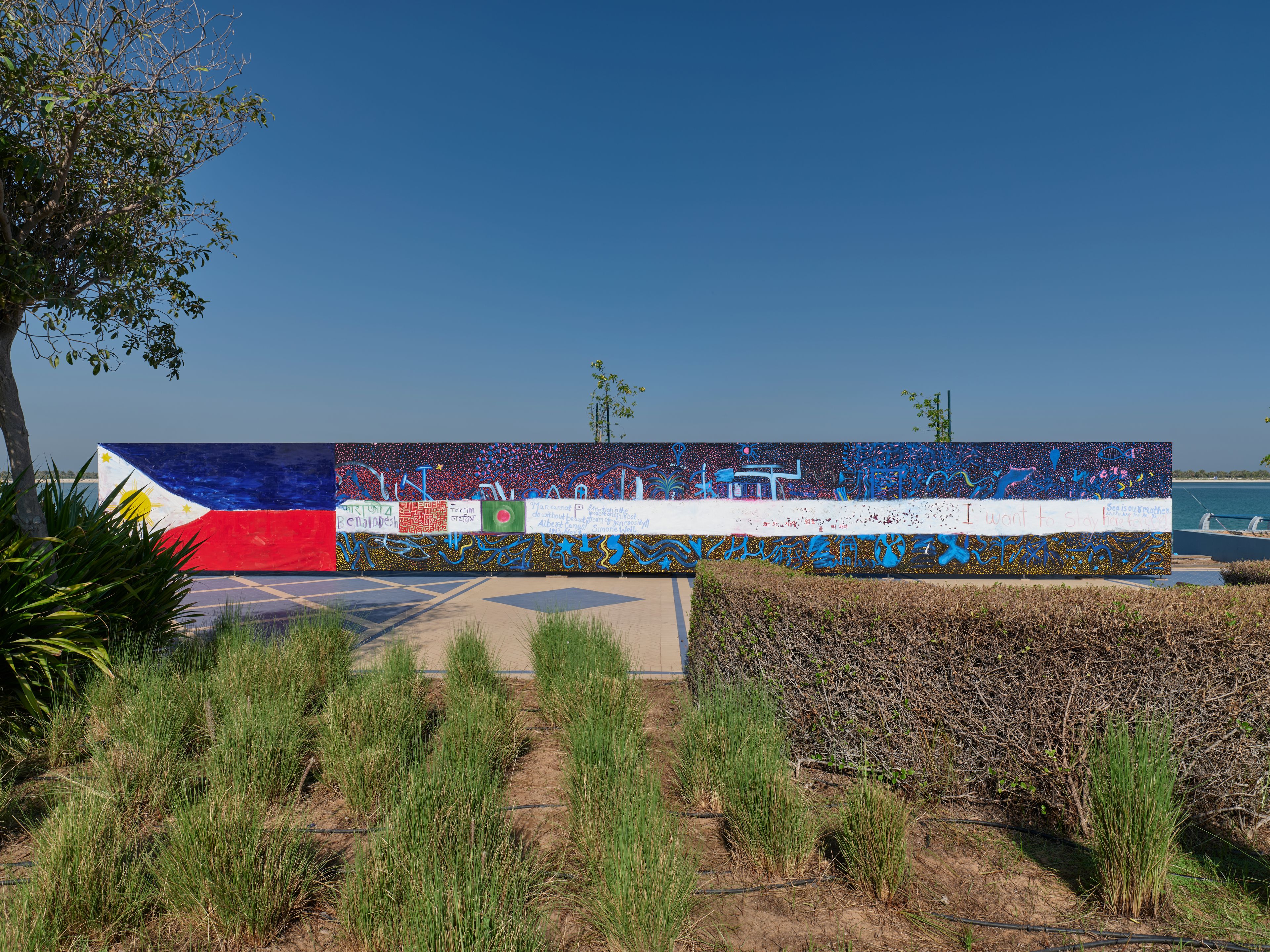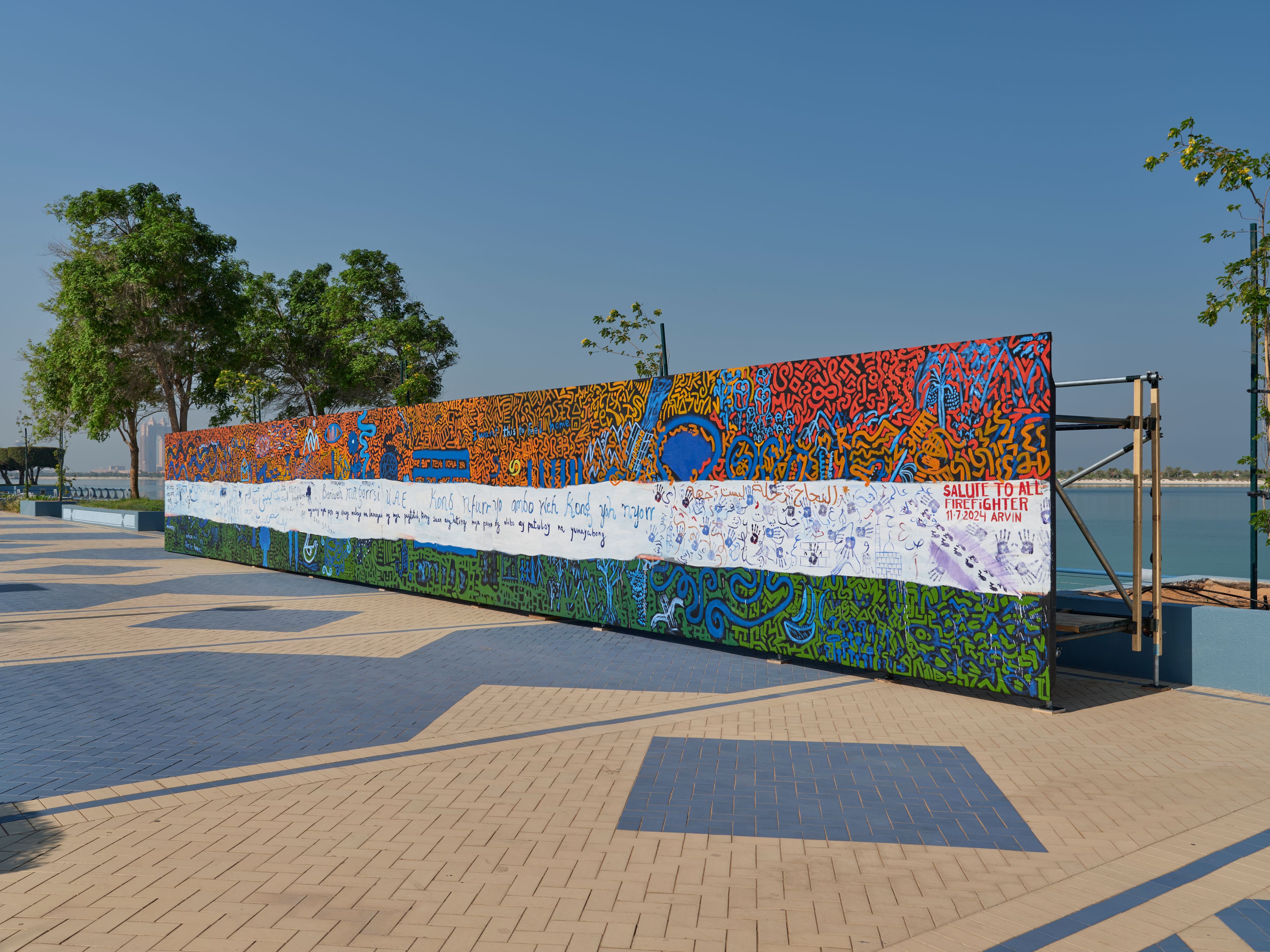Public Art Abu Dhabi Biennial, Abu Dhabi
November 15, 2024–April 2025
For Public Art Abu Dhabi’s 2024 Biennial, Public Matter, Murillo presents A 1% offering: collective messages to our ancestors, a large-scale, collaborative painting that spans 1% of Abu Dhabi’s 8 km-long corniche.
In a continuation of the artist’s large-scale participatory commission, The flooded garden at Tate Modern in summer 2024, the installation on the corniche forms part of the artist’s Surge (social cataracts) series. Featuring the artist’s aqueous marks in oil paint, flowing horizontally across its surface, these works take reference from Claude Monet’s Water Lilies, created in spite of the artist’s debilitating cataracts and loss of vision. This idea of darkness haunting a harmonious, serene surface has been a frequent concern of Murillo’s work, and the phrase "social cataracts" hints at the inability of individuals in society to see one another’s struggles clearly. Here on the corniche, painted black canvas is stretched against a vast 80 meter-long scaffolding structure, flooded with marks that become a catalyst for collective possibility.
Mirroring the waterfront, Murillo’s installation evades the city’s cosmopolitan marginality, speaking to the rapid urban expansion that has shaped Abu Dhabi and the wider region. For a populace that once looked towards the sea for its income, this monumental canvas offers a place for reflection. The scaffolding structure, evolving from the artist’s history of site-specific installations, symbolically occupies 1% of the beachfront, standing as a monument of globalization, construction, labor and of the migration that follows. Each brushstroke then, too, becomes part of this 1%, a participatory offering, confronting labels of inequity that might be placed on bodies that walk by.



